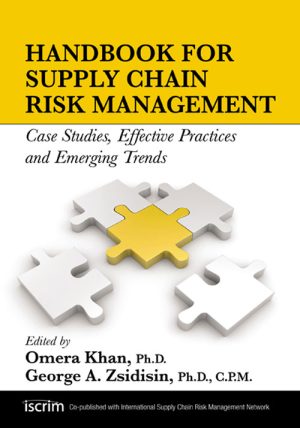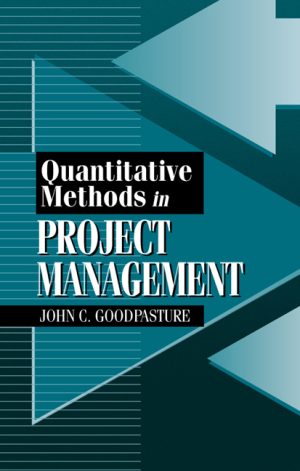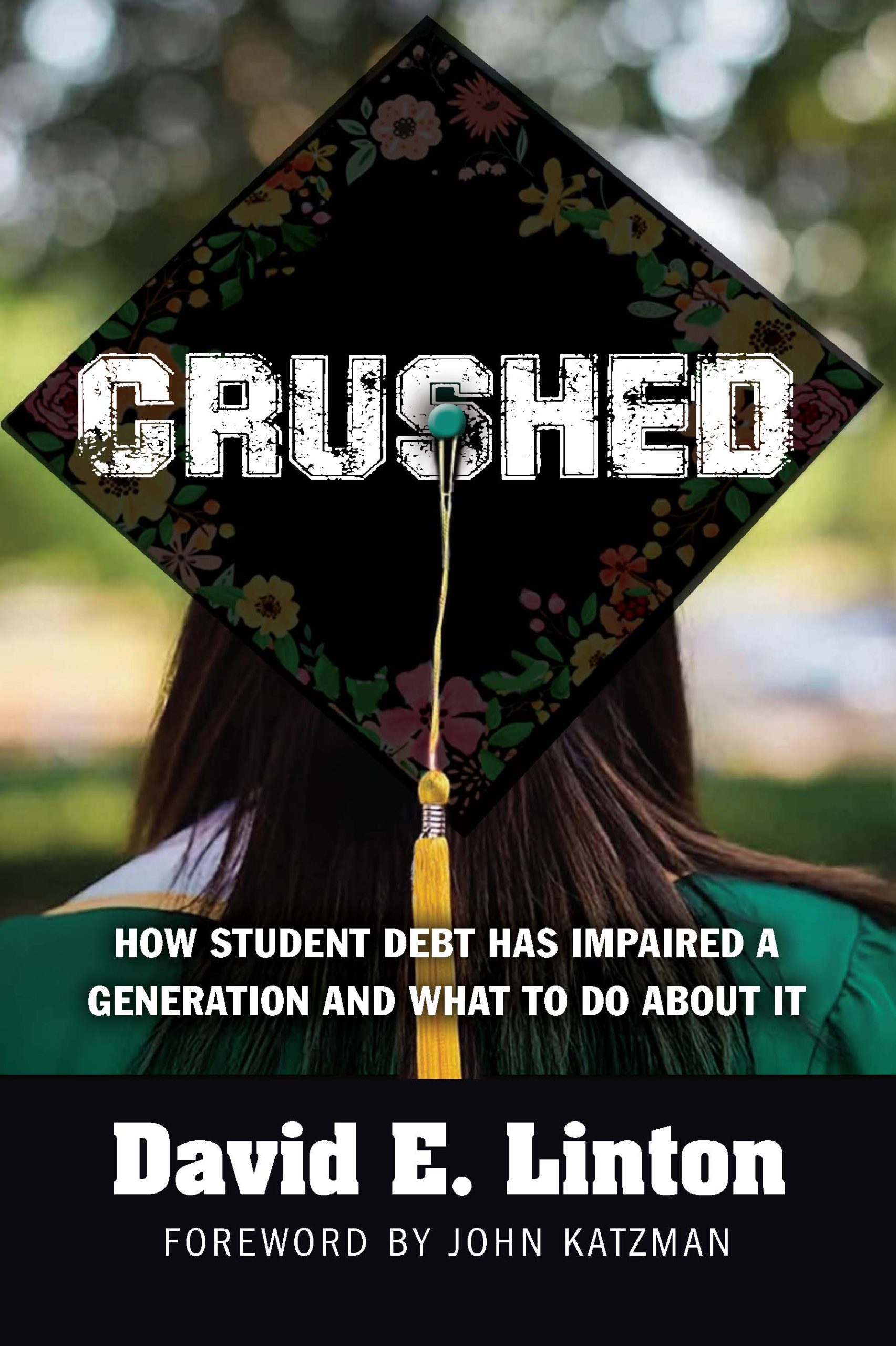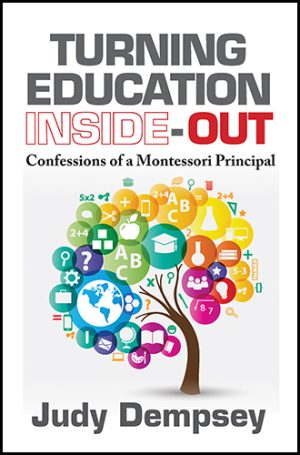Crushed
$29.95
How Student Debt Has Impaired a Generation and What to Do About It
David E. Linton, CFA
Softcover, 6×9, 312 pages
ISBN: 978-1-60427-189-8
e-ISBN: 978-1-60427-841-5
August 2023
Description
Crushed is a timely and insightful work that sheds light on the state of American universities and their graduates. It takes readers on a fascinating and reflective journey into the current student debt crisis and how it has become a major burden to American society. Beyond just describing how we got into this huge mess, Crushed also offers actionable public-policy steps to help fix this ever-growing problem.
This reader-friendly guide explores the U.S. university system in depth, the incentive structures driving university decisions, and what has led to both rapid tuition inflation and skyrocketing student debt. It also explores why the U.S. university system is no longer reducing the racial wealth gap and how it is now contributing to intergenerational poverty. Crushed explains what every parent or prospective student should know before, during, or after enrolling in college, including what choices they should make to graduate on time, with a valuable degree, and with little (or no) debt. Additionally, it concludes with a detailed policy discussion and provides simple, yet powerful, ways to mitigate and eventually eliminate runaway tuition inflation and the overwhelming stock of student debt.
Key Features
- Reviews the growth and development of the American university system, including its objectives, successes, and failures
- Explains university endowments, why these pools of capital are so large, and how they can be used more efficiently to ensure students graduate on time with valuable degrees
- Details the growth of college tuition, explains how tuition and other sources of income are used, and describes the perverse incentives that have led to unchecked tuition inflation
- Provides an in-depth analysis on the value of a college degree and describes how that value has changed over time
- Explains how the student loan industry grew to its current size and provides an explanation for how and why consumer protections were reduced
- Describes how the current tertiary educational system harms minority students and contributes to the interracial wealth gap
- Details legislative solutions to reducing debt, aligning incentives, restoring bankruptcy protections, and reducing the cost of a college education without reducing its value
About the author(s)
David E. Linton is an author, economist, and former Adjunct Professor at the University of Southern California’s Marshall School of Business, where he taught Investment Analysis and Portfolio Management. His first book, Foundations of Investment Management, has become a mainstay among aspiring professionals who want to bridge the gap between an academic understanding and the practical application of investment management strategies.
Mr. Linton is currently a Senior Portfolio Manager at a leading financial technology firm where he shares responsibility for the management of both corporate and customer cash assets. Previously, he was the Director of Portfolio Construction and Manager Research at Pacific Life Fund Advisors LLC. Prior to this, Mr. Linton was a Vice President and Portfolio Manager at PIMCO.
Mr. Linton is a CFA® charterholder with a BS in Business Administration from the University of Southern California and an MBA from the University of Chicago Booth School of Business.
Table of Contents
Table of Contents
Introduction
Foreword by John Katzman
About the Author
Chapter 1: A Brief History of the Growth of the American University System
Why Review History?
Colonial Period through The Civil War
The Civil War through WWII
Post WWII through the 1970s
1970s through the 2020s: Growth of Community, Public, and Private Colleges
Foundational Questions and Answers
Figure Citations
Chapter 2: Why Is College so Damn Expensive?
Rising Demand for Advanced Degrees
Universities’ Response to a Surge in Demand
The Price of a College Degree
Why Has Tuition Risen? The Academic Explanations
Why Has Tuition Risen? The Practical Explanations
Recent Developments
Conclusion
Chapter 3: The Value of a Degree: Why Go to College?
Benefits of a College Degree to the Individual
Societal Benefits
Risks and Harms of Earning a College Degree
Conclusion
Appendix 3.1: Employment and Salary Data, Sorted by Major
Appendix 3.2: Employment and Salary Data, Sorted by Median Wage Mid-Career (High to Low)
Chapter 4: The University Endowment: What Is It and Why Should We Care?
Endowment History and Objectives
How Are Endowments Managed?
Endowment Critiques
Conclusion
Figure Sources for Figures 4.1 and 4.2
Chapter 5: The Student Loan Industry: How Debt Grew and Consumer Protections Shrank
How Did We Get Here?
Where Are We Now?
Laws, Consumer Protections, and Bankruptcy
Conclusion
Chapter 6: How Student Loans Have Impaired a Generation
The Benefits of Student Loan Availability
Ways in Which Today’s Young Adults Have Been Impaired
The Cost to the Taxpayer
Conclusion
Chapter 7: Disparate Outcomes: How Postsecondary Institutions Harm Minority Communities
Starting Conditions
Black Students and Enrollment Decisions
The Results for Black Students
Policy Solutions: Benefits and Shortcomings
Conclusion
Chapter 8: Policy Solutions: How We Fix This Mess
Universities
Endowments
Lenders (Banks and the Government) and Borrowers (Students and Their Parents)
Conclusion
Chapter 9: What Every Parent, Student, and Prospective Student Should Know
Question 1: Should Someone Continue with Postsecondary Education?
Question 2: When Should Someone Continue with Their Postsecondary Education?
Question 3: How Do You Choose a College?
Question 4: What Should Someone Who Has Assumed Debt Do (and Not Do)?
Conclusion and Summary of Thoughts
CITATIONS
INDEX
Reviews
“This book is an absolute eye-opener and something the parent of every aspiring college student should read. Not only does Crushed break down the extent of the problem, but it also explains how we got into this mess and what we should do about it. Thoroughly researched and easy to read, this book will forever change the discussion around the current student debt crisis, its causes, and its solutions.”
—Jeff Sandefer, Entrepreneur and Former University of Texas Professor, Co-founder of the Acton School of Business and Acton Academy
“Nobel prize-winning economist Milton Friedman is credited with saying that ‘the government solution to a problem is usually as bad as the problem.’ Linton demonstrates this adage to be true by detailing how government intervention has led to the current student debt crisis, and more importantly, Linton explains how thoughtful and targeted policies can correct the situation. I highly recommend students, parents, and policymakers read this manuscript. Crushed is brilliantly insightful and timely.”
—Constantine Yannelis, Associate Professor of Finance and FMC Faculty Scholar, University of Chicago Booth School of Business
“An outsider’s perspective is often invaluable. Linton is not from within higher education. He is a curious and thoughtful economist who took on the challenge of understanding the problem of student debt from the perspective of a parent who will be writing tuition checks for several children in the near future. He asked the question: Why do they need to be so large? What resulted was a thoroughly researched and insightful analysis that will be invaluable to policymakers, parents, and students.”
—Stephen G. Moyer, Former Trustee Grinnell College, and best-selling author of Distressed Debt Analysis
“Crushed takes an evidence-based approach to one of the most pressing educational issues of the modern era—an issue that impacts everyone: student debt.”
—Foreword Reviews
“This exceptional title will likely appeal to readers interested in education, social science, and the elimination of student-loan debt.”
—Library Journal
You may also like…
Related products
-

Six Sigma for Small and Mid-Sized Organizations
Retail Price: $49.95$44.95 Add to cart -

Handbook for Supply Chain Risk Management
Retail Price: $79.95$69.95 Add to cart -

Achieving Project Management Success Using Virtual Teams
Retail Price: $49.95$39.95 Add to cart -

Quantitative Methods in Project Management
Retail Price: $64.95$59.95 Add to cart -

The Networked Supply Chain
Retail Price: $54.95$44.95 Add to cart




